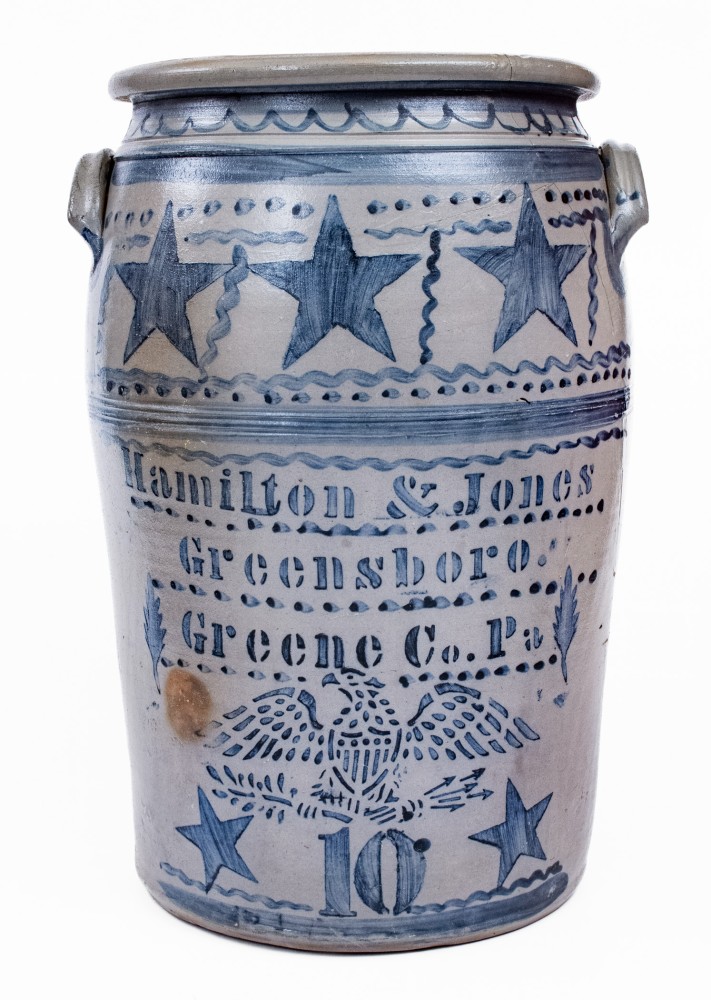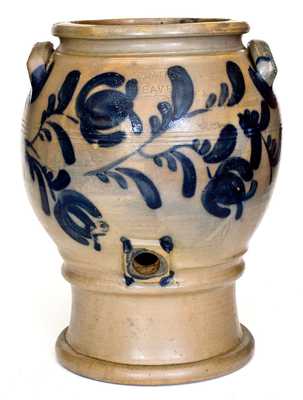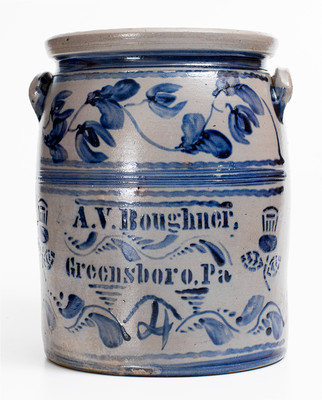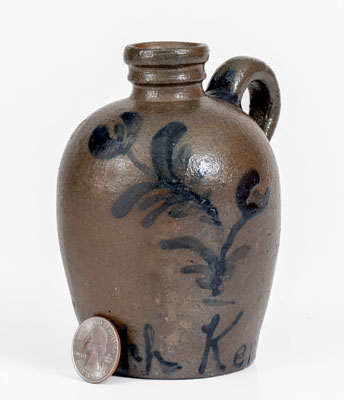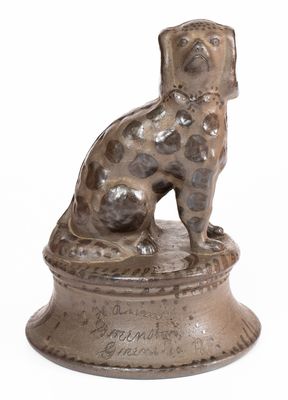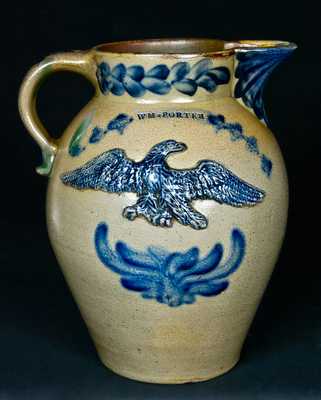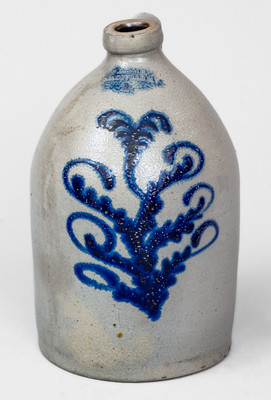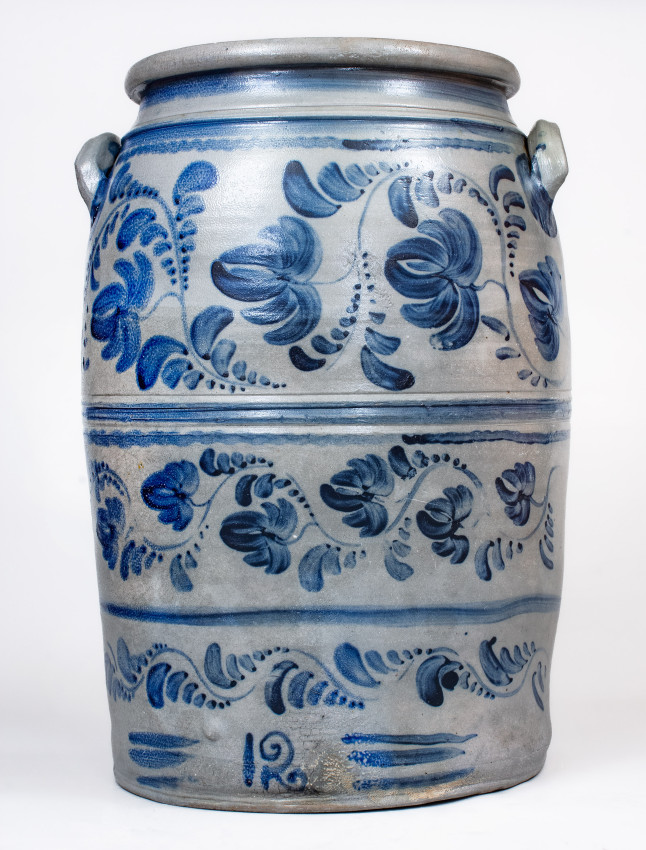Highly Important Stoneware Pedestal-Based Presentation Water Cooler with Profuse Freehand Cobalt Decoration, Inscribed "WM. POWERS" and "J.H.," Stamped "J. HAMILTON / BEAVER," PA origin, circa 1845, extravagantly-potted form with ovoid body, tall flaring collar, extruded open handles, and applied tubular bunghole, resting on a flaring pedestal base with raised turnings and rounded foot. The cooler is lavishly brush-decorated with undulating fuchsia vines across the front, extending around each side. Front incised with the large cobalt-highlighted name, "Wm.. POWERS," below a spotted drape motif. Collar decorated with an additional large fuchsia vine. The cooler's individually-thrown applied pedestal base is decorated with a looping vine above a series of undulating vines. Foot decorated completely around with a series conjoined leaves. Reverse decorated with the freehand initials, "J.H.," the signature of potter, James Hamilton, within a looping vine border, below the potter's impressed maker's mark. Brushed cobalt forms an oval line accenting the extrusion of the handles, circular highlights surround the handle terminals, and a cobalt band covers the front of the bunghole. Among the most important and decorative examples of Western Pennsylvania stoneware to come to auction in decades, this work presents a young James Hamilton at his very best. The cooler's coveted pedestal-based form is amplified by an over-the-top beverage urn shape, uncharacteristic of the regional style, which showcases Hamilton's artistic abilities. William H. Powers appears in an 1849 local tax record as an innkeeper in the town of Beaver, and it is highly probable that this object was fashioned by Hamilton as a beverage dispenser for Powers' inn. The potter evidently took a level of pride in this work by inscribing his initials boldly on the reverse, a highly unusual treatment. The elaborate fuchsia vine motifs and drape motifs are traits that Hamilton would take with him to Greensboro, Pennsylvania circa 1850 and use for the next twenty-five years, influencing the work of other potters throughout the region. This cooler's extraordinary form and stunning decoration define it as the finest surviving example of Beaver, Pennsylvania stoneware and a masterwork by one of Western Pennsylvania's most famous and skilled potters. Provenance: A fresh-to-the-market example, which recently surfaced in the Midwestern U.S. Exceptional condition for an often-damaged form. A thin, approximately 5 1/4" diagonal crack to pedestal base on proper left side of vessel. Chips to interior edge of underside, only visible when cooler is turned over. Minor chips to interior of rim. Traces of old yellow paint to interior and minor traces of old paint to handles, unrelated to any sort of restoration. H 19 7/8".

















